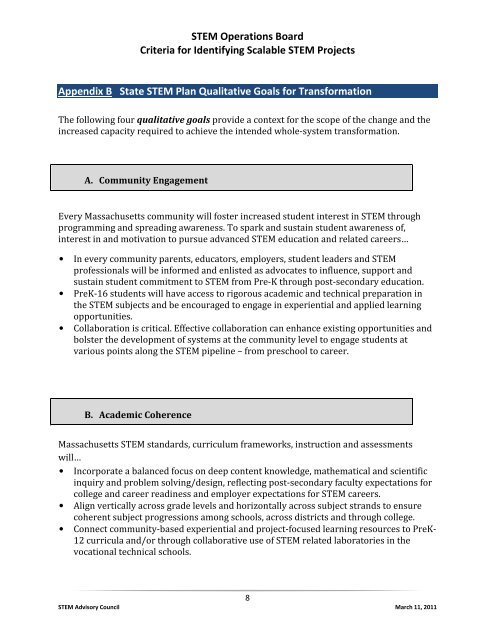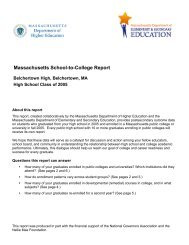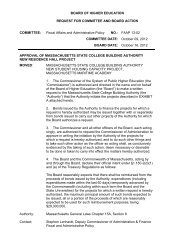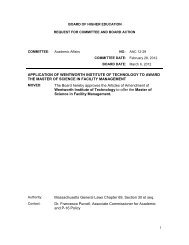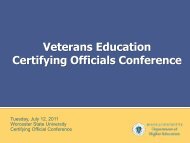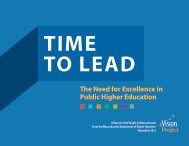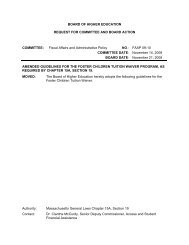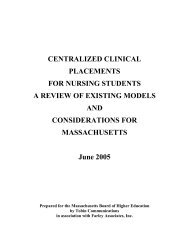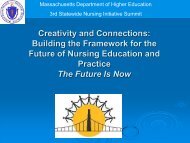Criteria for Identifying Scalable STEM Projects - Massachusetts ...
Criteria for Identifying Scalable STEM Projects - Massachusetts ...
Criteria for Identifying Scalable STEM Projects - Massachusetts ...
You also want an ePaper? Increase the reach of your titles
YUMPU automatically turns print PDFs into web optimized ePapers that Google loves.
<strong>STEM</strong> Operations Board<strong>Criteria</strong> <strong>for</strong> <strong>Identifying</strong> <strong>Scalable</strong> <strong>STEM</strong> <strong>Projects</strong>Appendix B State <strong>STEM</strong> Plan Qualitative Goals <strong>for</strong> Trans<strong>for</strong>mationThe following four qualitative goals provide a context <strong>for</strong> the scope of the change and theincreased capacity required to achieve the intended whole-system trans<strong>for</strong>mation.A. Community EngagementEvery <strong>Massachusetts</strong> community will foster increased student interest in <strong>STEM</strong> throughprogramming and spreading awareness. To spark and sustain student awareness of,interest in and motivation to pursue advanced <strong>STEM</strong> education and related careers…• In every community parents, educators, employers, student leaders and <strong>STEM</strong>professionals will be in<strong>for</strong>med and enlisted as advocates to influence, support andsustain student commitment to <strong>STEM</strong> from Pre-K through post-secondary education.• PreK-16 students will have access to rigorous academic and technical preparation inthe <strong>STEM</strong> subjects and be encouraged to engage in experiential and applied learningopportunities.• Collaboration is critical. Effective collaboration can enhance existing opportunities andbolster the development of systems at the community level to engage students atvarious points along the <strong>STEM</strong> pipeline – from preschool to career.B. Academic Coherence<strong>Massachusetts</strong> <strong>STEM</strong> standards, curriculum frameworks, instruction and assessmentswill…• Incorporate a balanced focus on deep content knowledge, mathematical and scientificinquiry and problem solving/design, reflecting post-secondary faculty expectations <strong>for</strong>college and career readiness and employer expectations <strong>for</strong> <strong>STEM</strong> careers.• Align vertically across grade levels and horizontally across subject strands to ensurecoherent subject progressions among schools, across districts and through college.• Connect community-based experiential and project-focused learning resources to PreK-12 curricula and/or through collaborative use of <strong>STEM</strong> related laboratories in thevocational technical schools.8<strong>STEM</strong> Advisory Council March 11, 2011


